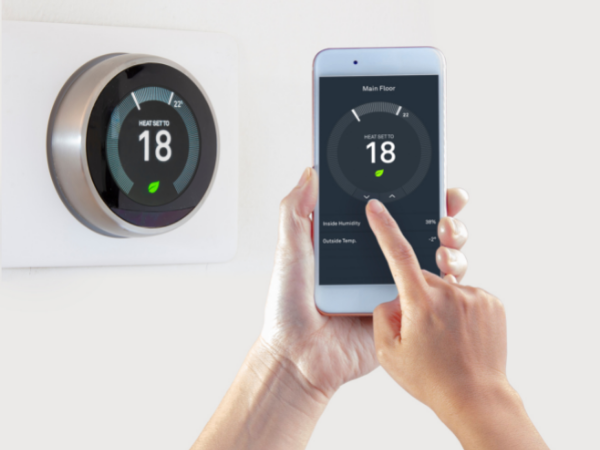
Smart vs programmable thermostats: Which is more energy efficient?
Cut your electricity costs and make a difference for the planet with energy efficiency technology. Seeff breaks down smart vs programmable thermostats and which choice is more energy efficient.
We shivered for months and endured the rain and frigid winter air. Now, as South Africa heads into summer, the days are quickly getting warmer, and our homes are heating up. Even if you love the warmer weather, you might not object to cooler temperatures on your own terms. That’s where a thermostat comes in: providing the perfect level of comfort, no matter what the weather is doing.
If you want to simultaneously do good for the environment, and lower your electricity bill, take this chance to ensure that the thermostat you choose is energy efficient.
Share This Post
The Difference Between Smart And Programmable Thermostats
Smart thermostats and programmable thermostats are very similar. But the difference lies in digital.
- Typical programmable thermostats allow you to manually select certain temperatures for specific periods of time.
- Smart thermostats enable you to monitor and control temperature levels from a downloadable app whenever you choose. Depending on the smart thermostat you choose, you can access a host of additional features, as well.
Just make sure your smart thermostat is compatible with your heating, ventilation, and air conditioning (HVAC) system before you purchase and try to install it.

Which is More Energy Efficient: Smart or Programmable Thermostats?
While both are very similar and an improvement on manual thermostats, the benefits of a smart thermostat add up to offer more energy efficiency.
The benefits of a smart thermostat include:
- Convenience. Dropping kids at school, attending meetings, doing grocery shopping, driving to and from the office...life is already full of schedules and commitments, and you shouldn’t have to fret about the temperature of your house and when you’ll get a chance to troop into the lounge and readjust it. That makes it a hassle.
- A smart thermostat allows you to control your home’s temperature remotely. You might be in your bed, or a Zoom meeting, or even on holiday, but you can still adjust the temperature in your rooms (if your smart thermostat has the “zoning” feature) and view the temperature readings.
- User-friendly. The main issue with programmable thermostats is that they’re not easy to, well, program. Or reprogram if your plans change. Unless you program your thermostat in the right way (aligning it with your lifestyle, home, and schedule), you may not be saving energy at all.
Is it scheduled for the correct date and time?
Are multiple people controlling the temperature levels?
If you want to use a programmable thermostat effectively, you must eliminate these variables and know precisely how to work it.
- AI capabilities. “Alexa, turn up the heat...”
Depending on the type of smart thermostat you purchase, it does more than simply keep your home at a comfortable temperature.
Some thermostats are compatible with Amazon’s Alexa, Google Assistant, iTunes, and more. Some thermostats even provide you with an energy report to track your energy usage.
- Adapting to user behaviour. Smart thermostats are programmable, but they offer something extra. They learn your behaviour over time and can automatically adjust the temperature of a room when they sense someone’s entered or left.
Some thermostats will switch into energy-saving mode depending on your behaviour (i.e. when no one’s home). This way, you can save on your HVAC bills and conserve energy.
"Please note: All building conversions and renovations must always be subject to local bylaws and building regulations."







